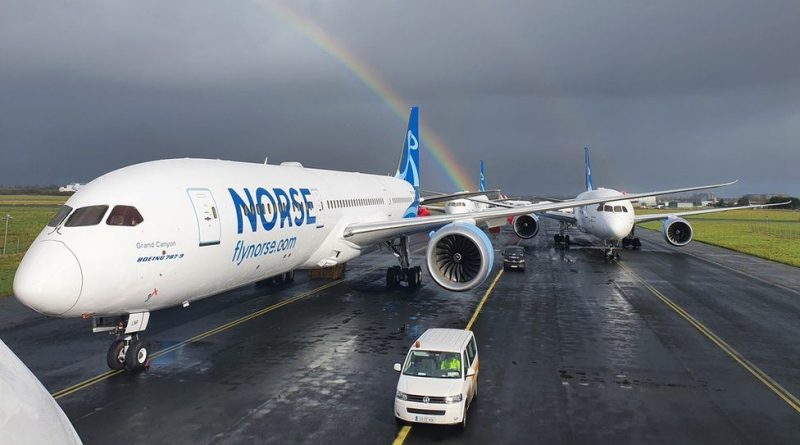The new airlines betting flying is about to take off
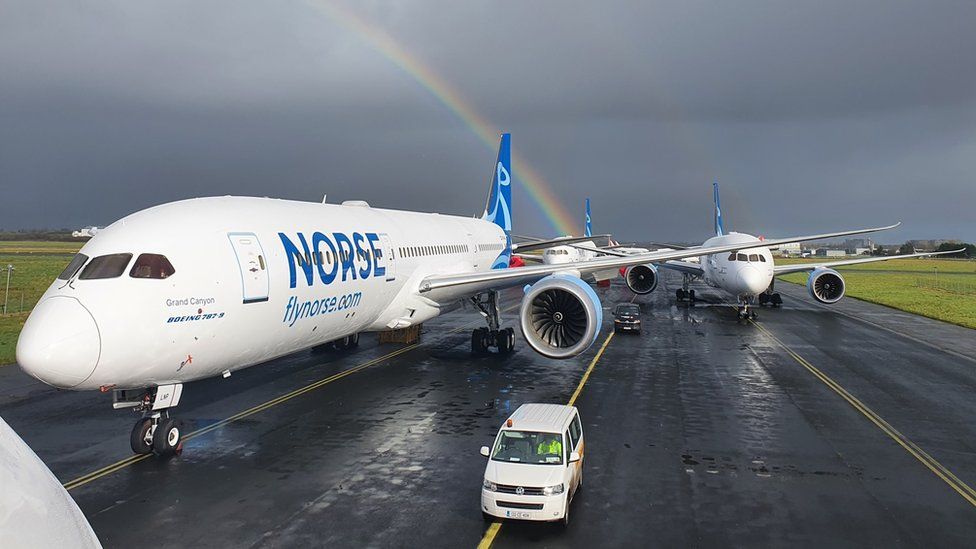
The pandemic brought about the most turbulent period in commercial aviation history.
Yet, over the past year dozens of new carriers have started up around the world, hoping that air travel is about to take off again.
“It’s actually a very good time to launch an airline,” says Bjorn Tore Larsen, chief executive of Norse Atlantic Airways. “There is a huge pent up demand. People haven’t been able to travel for two years or more, particularly between continents.”
Norse Atlantic Airways is among the newcomers and will begin flying its “longboats” between Europe and North America from 14 June, having snapped up planes for low prices, and being able to secure valuable airport slots including London Gatwick and New York JFK.
The Norwegian firm received more than 3,000 applications for its first 50 pilot jobs.
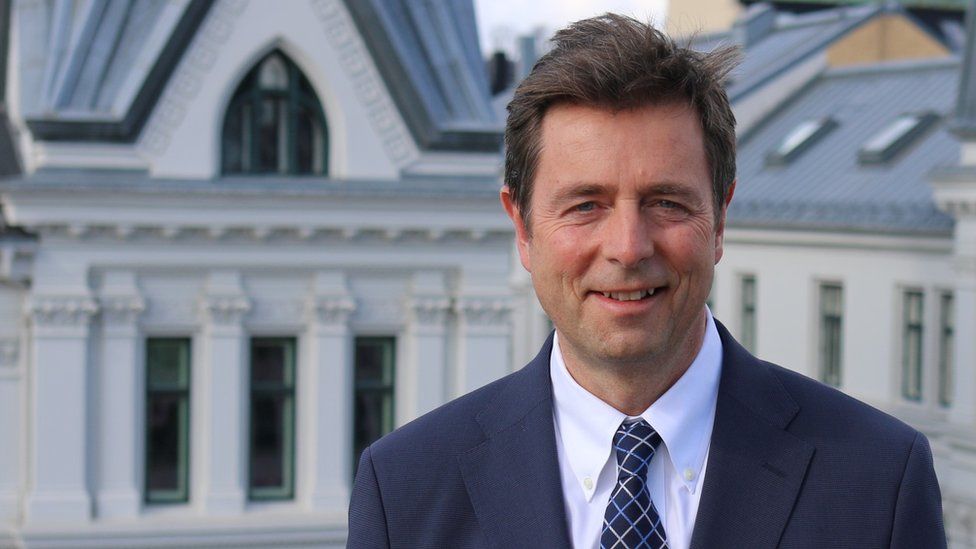
“These are actually brand new aircraft,” says Mr Larsen, pointing to the fleet of Boeing Dreamliners on the tarmac at Oslo Airport. “We were able to get these aircraft much lower [priced] than anyone else has been able to achieve earlier.”
Norse will be competing with established players, such a British Airways and Air France. But Mr Larsen believes there are benefits to building the airline from scratch.
“We don’t have any legacy systems,” he says. “We are able to start off this airline in exactly the way we would like to.”
The entrepreneur, who also runs a shipping business, tells the BBC he had a passion for aviation but hadn’t been tempted earlier due to the high risks involved – strong competition, typically very expensive to source the aircraft, hard to recruit staff, and difficult to get landing and take-off slots.
“When the stars aligned last year, I viewed it as a once-in-a-lifetime market opportunity,” he says. And Mr Larsen isn’t alone in spotting a golden opportunity.
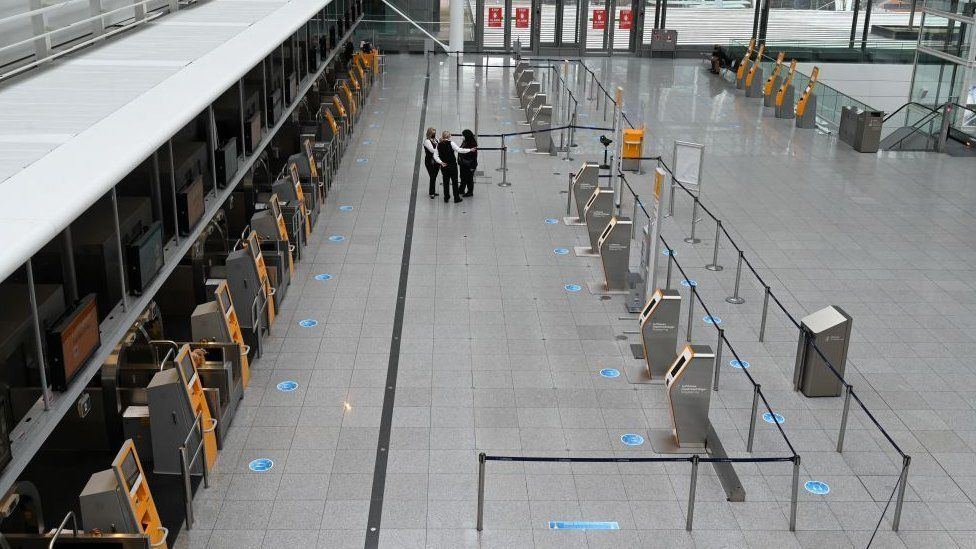
The International Air Transport Association (IATA), the trade body that represents the aviation sector, has described 2020 as “the worst year on record”.
With flights grounded, global passenger numbers two years ago fell 60% – down to 1.8 billion from 4.5 billion in 2019.
This resulted in 55 airlines going out of business in 2020. Yet, what is perhaps initially surprising is that at the same time 32 new airlines were launched, the IATA has told the BBC.
Due to much of the industry being grounded, these new carriers were able to buy cheap aircraft as prices had fallen alongside the decline in demand. Newly available arrival and departure slots could also be snapped up, and staff were suddenly available.
It was a similar picture in 2021. While worldwide passenger numbers recovered slightly to 2.3 billion, a further 35 airlines closed down, while 57 new ones were launched.
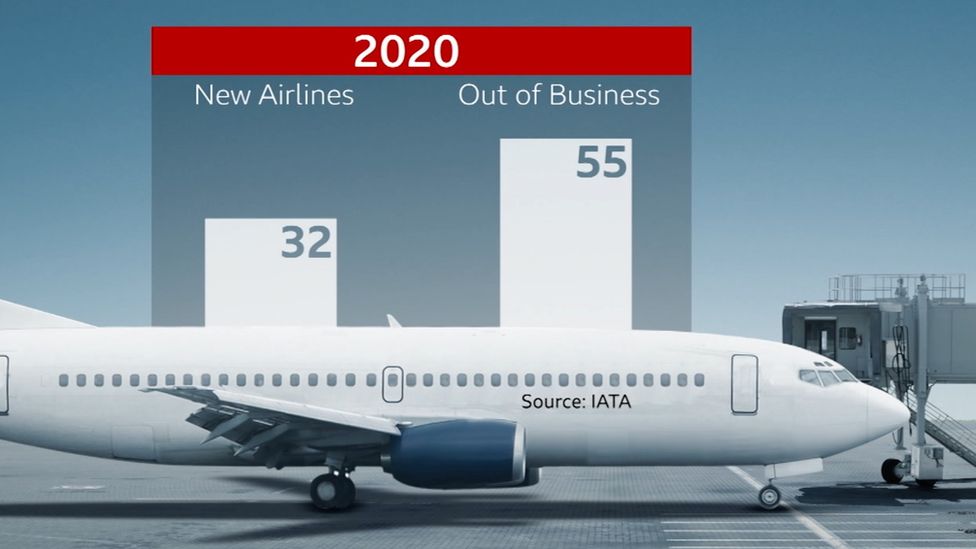
The debutants have taken off in most regions of the world. Avelo, and Breeze are operating in the US, where they are due to be joined later this year by Alaskan airline Northern Pacific.
In Iceland, we now have Play and Niceair, while Australian newcomer Bonza, and India’s Akasa, are expected in the skies soon.
“Airlines have never experienced a situation like the last two years,” says aviation expert, Hans Joergen Elnaes, from consultancy Winair.
“Yet, there has been a situation where a huge number of aircraft are available, and leasing rates at very attractive prices,” explains the aviation analyst.


New Tech Economy is a series exploring how technological innovation is set to shape the new emerging economic landscape.

Mr Elnaes adds that, since 2020, new airlines could also easily attract out of work cabin crew and pilots – many of whom lost their jobs during the pandemic.
However, he thinks this unique window has now closed, particularly in terms of securing cheap financing. “The once in a lifetime deals for leasing aircraft was in 2021. Those days are gone.”
Both Norse and Iceland’s Play will operate low-cost transatlantic flights.
This is an areas of the market where other new entrants have failed. Wow ceased operations in 2019, while Norwegian Airlines axed its long-haul routes in early 2021.
However, Mr Elnaes reckons valuable lessons have been learned, and the current is different.
“Both are being very careful not to be too ambitious, not to operate too many flights, before they have established themselves and see how things work,” he says.
Another new Norwegian carrier, Oslo-based Flyr, launched domestic and European flights last summer. Its chief executive, Tonje Wikstrom Frislid, says being small and lean helped it weather the later lockdowns.
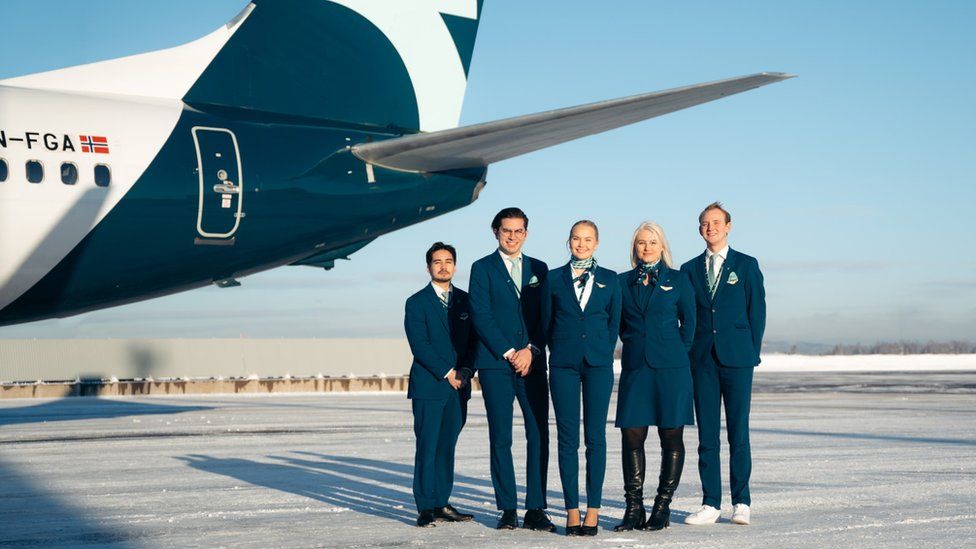
“We really had to prove our model. We’ve really been tested during this past winter, especially,” she says. “And we passed the test.”
“Setting up a company in itself is a challenge. Creating a new airline is an extreme challenge. And we did it on Teams mainly.”
Ms Frislid adds that the availability of experienced aviation staff looking for work was a big bonus. “You need specific competence to start an airline.
“That’s not easy to get a hold of in a normal environment. This pandemic situation opened that possibility.”
Soon Flyr will operate 12 aircraft over 46 routes. “We’re going to build this gradually,” says Ms Frislid.

Among the airline’s new recruits is pilot Peter Haglehoj. “The pandemic was quite tough for a lot of people,” he says. “So new airlines is good. It means more jobs.”
With coronavirus travel restrictions continuing to be lifted around the world, global passenger numbers are now rising strongly. In March they 76% higher than the same month last year, according to the latest figures from the IATA. Yet the organisation still doesn’t expect 2019’s pre-pandemic high to be equalled until 2024.
And just as the coronavirus crisis has waned, another unforeseen problem has arisen for airlines – the war in Ukraine.
This has made Ukraine too dangerous to fly over, at the same time as Russia has closed its airspace to Western airlines. This has added hours to some routes between Europe and Asia, and made them unprofitable.
More significantly, global oil prices have soared, and the cost of jet fuel has doubled since last year. IATA’s director-general, Willie Walsh s has suggested that as a result higher fares are “inevitable”.
Yet Mr Elnaes says that passengers are willing to pay any higher costs. “People just want to travel.” He adds: “We saw a dampening demand in the first 12 to 14 days after Russia invaded but then it stabilised.”
Flyr’s Ms Frislid says her airline is flying brand new aircraft, “which saves us about 14% fuel [compared with older planes]. So, that’s also one way of handling the increasing fuel prices.”
Meanwhile, Norse has opted for a slightly softer launch with fewer aircraft.
“We have the flexibility to enter the market cautiously and in line with demand, which is exactly what we will do,” says Mr Larsen, its chief executive.

